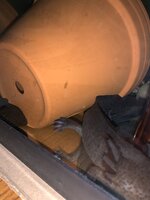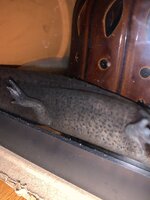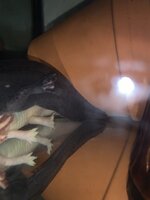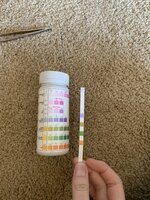The triplets
New member
My axolotls live in a large tank together, everything was going super easy. Lately they aren’t acting are normal as usual. Their ph, nitrates and all that haven’t changed. Their tank was cleaned and I don’t think that’s a problem but we’ll I’m not sure.
I have rescues, they took a little to warm up to their new home but quickly becoming happy eaters, eating everything in front of them. Lately though their strikes have been weaker and less accurate then normal and they aren’t eating as much. Normally they will each 1- 1 1/2 worms each but now I’m lucky if they eat anything. I am getting concerned since white is appearing on my black acolotl. Mainly on his limbs and their now becoming pinkish.
The last photos the worst looking foot.
My axolotls live in a large tank together, everything was going super easy. Lately they aren’t acting are normal as usual. Their ph, nitrates and all that haven’t changed. Their tank was cleaned and I don’t think that’s a problem but we’ll I’m not sure.
I have rescues, they took a little to warm up to their new home but quickly becoming happy eaters, eating everything in front of them. Lately though their strikes have been weaker and less accurate then normal and they aren’t eating as much. Normally they will each 1- 1 1/2 worms each but now I’m lucky if they eat anything. I am getting concerned since white is appearing on my black acolotl. Mainly on his limbs and their now becoming pinkish.
The last photos the worst looking foot.
I have rescues, they took a little to warm up to their new home but quickly becoming happy eaters, eating everything in front of them. Lately though their strikes have been weaker and less accurate then normal and they aren’t eating as much. Normally they will each 1- 1 1/2 worms each but now I’m lucky if they eat anything. I am getting concerned since white is appearing on my black acolotl. Mainly on his limbs and their now becoming pinkish.
The last photos the worst looking foot.
My axolotls live in a large tank together, everything was going super easy. Lately they aren’t acting are normal as usual. Their ph, nitrates and all that haven’t changed. Their tank was cleaned and I don’t think that’s a problem but we’ll I’m not sure.
I have rescues, they took a little to warm up to their new home but quickly becoming happy eaters, eating everything in front of them. Lately though their strikes have been weaker and less accurate then normal and they aren’t eating as much. Normally they will each 1- 1 1/2 worms each but now I’m lucky if they eat anything. I am getting concerned since white is appearing on my black acolotl. Mainly on his limbs and their now becoming pinkish.
The last photos the worst looking foot.




